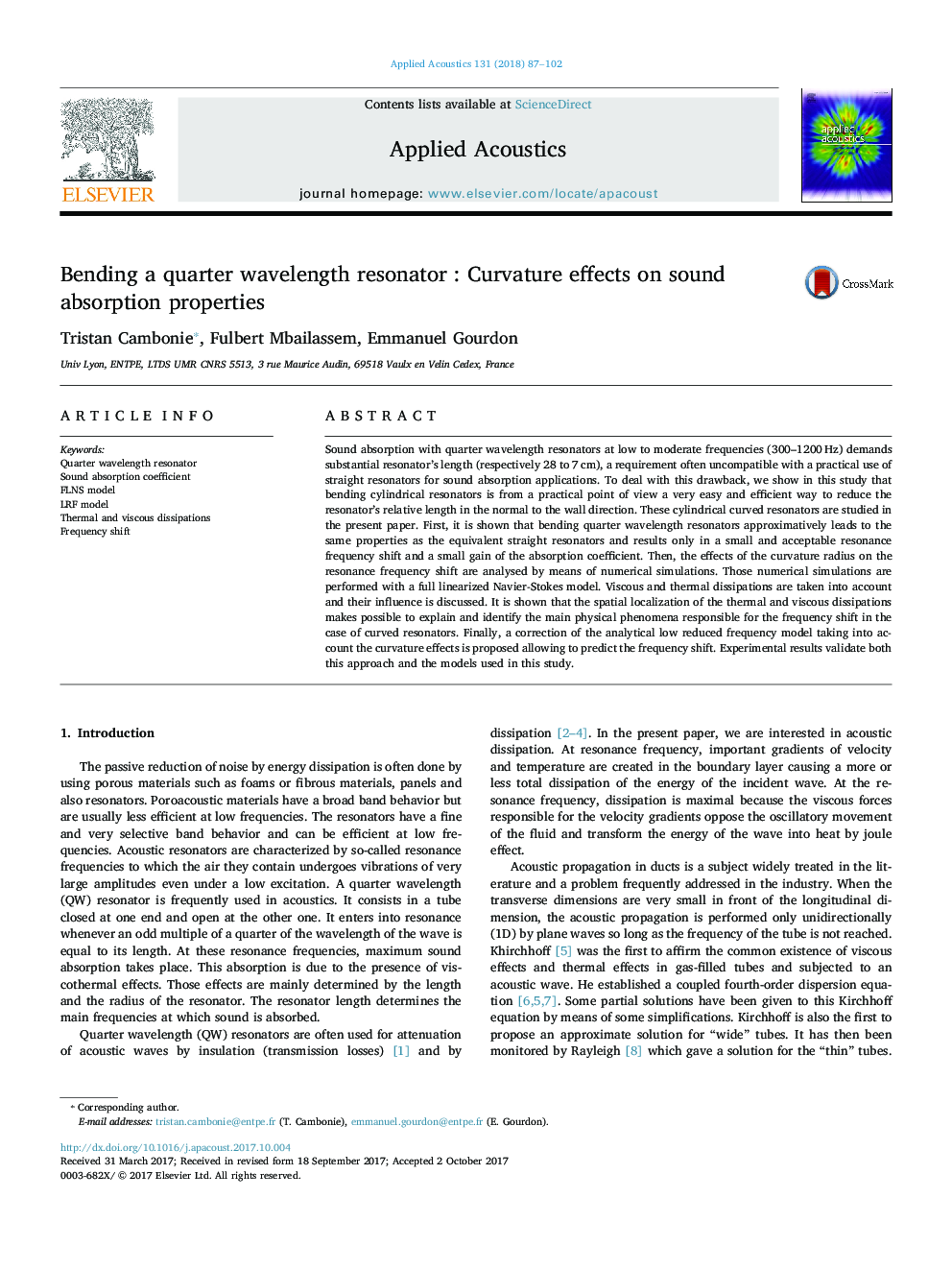| Article ID | Journal | Published Year | Pages | File Type |
|---|---|---|---|---|
| 7152388 | Applied Acoustics | 2018 | 16 Pages |
Abstract
Sound absorption with quarter wavelength resonators at low to moderate frequencies (300-1200â¯Hz) demands substantial resonator's length (respectively 28 to 7â¯cm), a requirement often uncompatible with a practical use of straight resonators for sound absorption applications. To deal with this drawback, we show in this study that bending cylindrical resonators is from a practical point of view a very easy and efficient way to reduce the resonator's relative length in the normal to the wall direction. These cylindrical curved resonators are studied in the present paper. First, it is shown that bending quarter wavelength resonators approximatively leads to the same properties as the equivalent straight resonators and results only in a small and acceptable resonance frequency shift and a small gain of the absorption coefficient. Then, the effects of the curvature radius on the resonance frequency shift are analysed by means of numerical simulations. Those numerical simulations are performed with a full linearized Navier-Stokes model. Viscous and thermal dissipations are taken into account and their influence is discussed. It is shown that the spatial localization of the thermal and viscous dissipations makes possible to explain and identify the main physical phenomena responsible for the frequency shift in the case of curved resonators. Finally, a correction of the analytical low reduced frequency model taking into account the curvature effects is proposed allowing to predict the frequency shift. Experimental results validate both this approach and the models used in this study.
Related Topics
Physical Sciences and Engineering
Engineering
Mechanical Engineering
Authors
Tristan Cambonie, Fulbert Mbailassem, Emmanuel Gourdon,
